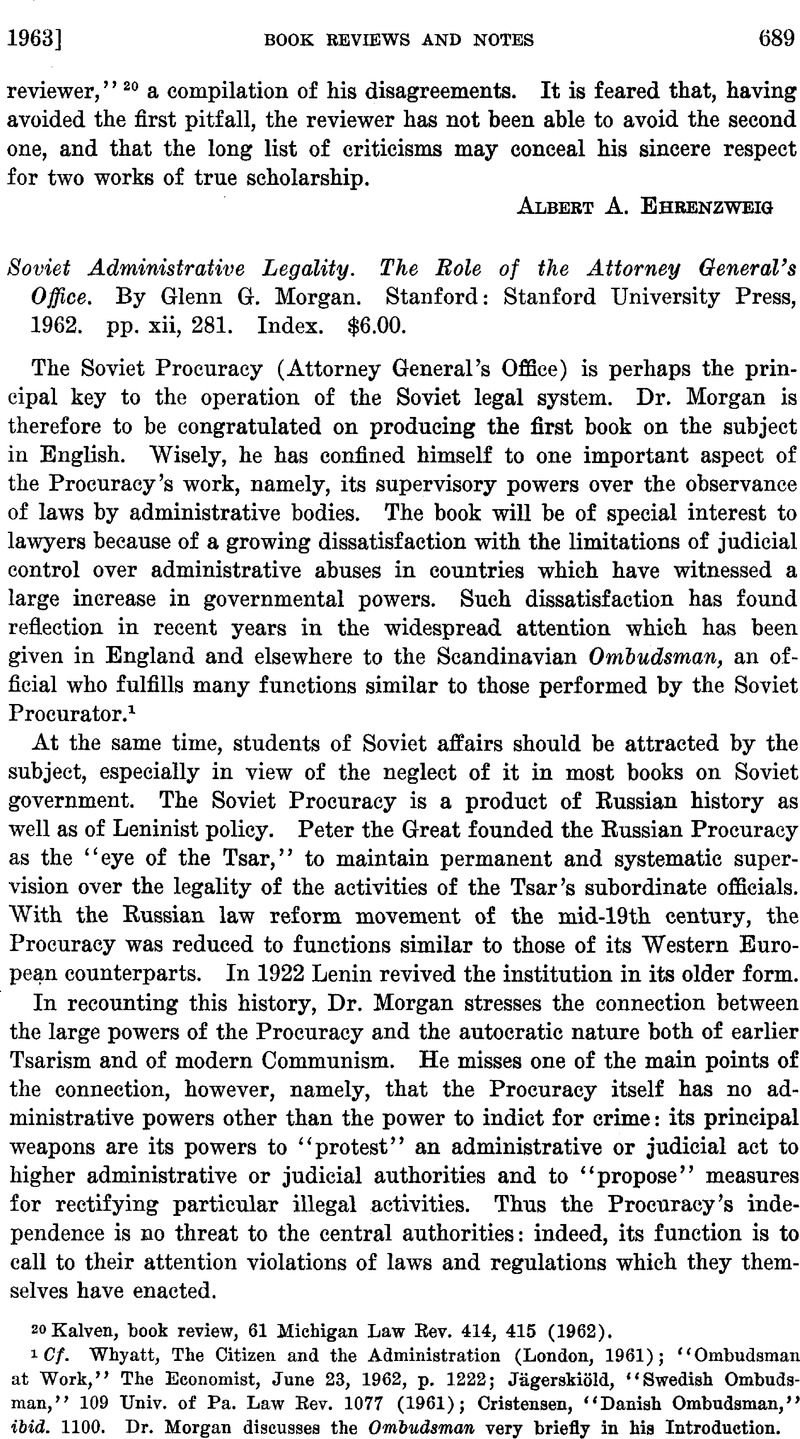No CrossRef data available.
Published online by Cambridge University Press: 28 March 2017

1 Cf. Whyatt, The Citizen and the Administration (London, 1961); “Ombudsman at Work,” The Economist, June 23, 1962, p. 1222; Jagerskiold, “Swedish Ombudsman,”109 Univ. of Pa. Law Eev. 1077 (1961); Cristensen, “Danish Ombudsman,” ibid. 1100. Dr. Morgan discusses the Ombudsman very briefly in his Introduction.
2 At several points the author characterizes the Procuracy as lacking in professional qualifications and legal education. He cites no statistical data, but has apparently drawn on general Soviet self-criticism for this view. However, the 1955 statute on the Procuracy makes higher legal education a prerequisite for membership except in rare cases, and, indeed, the Procuracy has always attracted a large percentage of the most able Soviet lawyers. The author gives no basis for his statement that “those appointed to watch over legality at the lowest governmental levels simply have not had sufficient education or legal training to perform their tasks well” (p. 107).
3 The principal weakness of the book is attributable in part to the absence of adequate statistical data and the consequent necessity to rely on secondary sources. The author in many instances has fallen into the common error of taking these sources too seriously, especially when they reveal shortcomings. It is tempting to treat every Soviet self-criticism as an admission against interest and therefore to be believed. Often, however, the self-criticism is, in the Soviet context, self-serving. Concretely, perhaps the most serious defect in Dr. Morgan's work is his reiterated assertion that the Procuracy's function of general supervision was “ i n abeyance” from 1929 to 1936 (Ch. 5) and again “vanished” in the war years (of. p. 115). There is little evidence for this, and much evidence to the contrary in the text itself. A second defect, already referred to in the body of this review, is the reiterated assertion of a conflict between the Procuracy's subservience to state interests and its function of protecting individual rights; individual rights themselves are substantially limited under Soviet law, but within those limitations, and within the Procuracy's own limited powers of general supervision, the conflict is not apparent. Also Dr. Morgan's insistence at various points, and especially in his conclusion, that the Procuracy function of supervision is anti-democratic and that it is essentially linked with absolutism and with a primitive social order, is contradicted by the Scandinavian experience